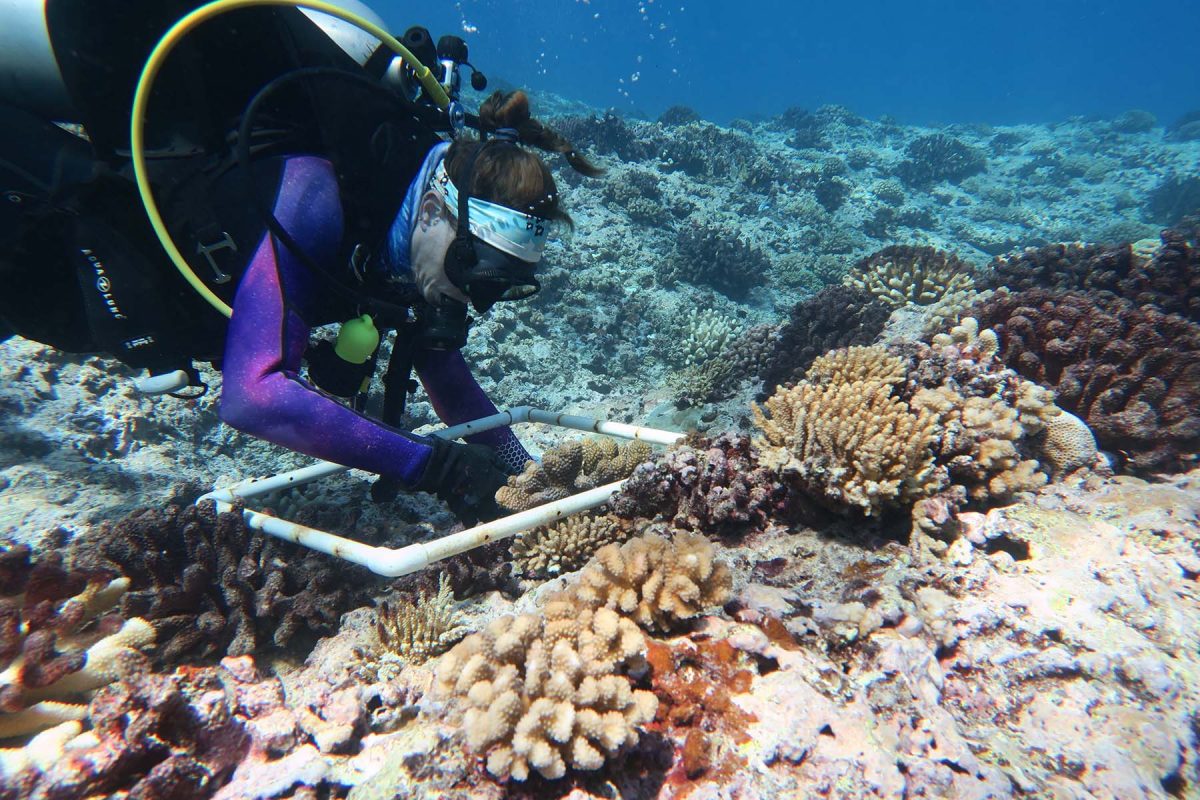
Scientists from the Department of Biological Science at Florida State University have described and named a new species of coral in the waters of French Polynesia.
Postdoctoral researcher Erika Johnston and Scott Burgess, associate professor of Biological Science, described Pocillopora tuahiniensis by studying the coral’s genome and examining the symbiotic algae that live inside its cells.
They also considered where these coral live and how they’re different from other specimens in the area. These things helped them conclude that this coral represents a previously undescribed species. Their research was published in Zootaxa.

Telling one type of Pocillopora coral from another is tough, Johnston said, because they all look similar. Corals from the same species can look different, and corals from different species can look alike. These are called “cryptic species.”
”We know from experience that if you try to identify Pocillopora corals as distinct species while underwater, most of the time the identification will be wrong,” Burgess said. “It is why most research in the past simply lumps all of these corals into a single group, but they are actually all different.”
In the past, scientists used to look at the shape of corals to determine their species. But now, with advancements in genomics, they can identify evolutionarily distinct species that are “hidden” by morphological similarity.
Findings like this are important because they fundamentally change how we study and conserve biodiversity.
The increased frequency and severity of coral bleaching caused by human-induced climate change is the biggest threat to coral reefs, Burgess said, so efforts to understand the breadth of biodiversity are needed to prevent extinctions and loss of adaptive potential.
Researchers working on restoration efforts also need to know which species to prioritize. Not considering cryptic species could doom them to failure.
“If we’re not able to properly identify corals, we won’t know what we’re losing or how to save it,” Johnston said.
The scientists gave this new coral the species name “tuahiniensis” because tuahine means “sister” in the Tahitian language. The name honors the people who have lived on these islands for several thousand years.
Corals are crucial components of coral reef ecosystems, which provide many ecological, health and economic benefits to humans. Burgess said he hopes the research benefits not only the global scientific community but also the local community for enhancing restoration and resource management, which is vital for the preservation and protection of these ecosystems.
“As guests, we want to thank the long-term support of the French Polynesian government for allowing us to conduct our research in French Polynesia,” Burgess said. “We want to recognize and give thanks for the land and water resources of Polynesia, in particularly Mo’orea, and to the traditional owners of the land, both past and present.”
The research was supported by the National Science Foundation.




